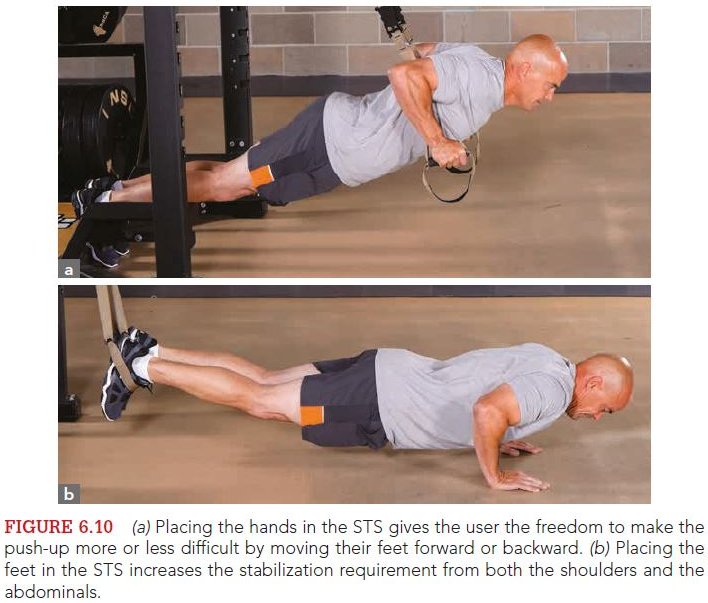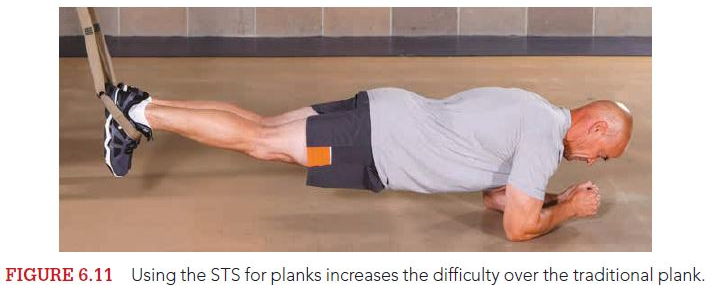Suspension Training
by Strength Training
Kinetic Select
July 2022
This excerpt from Strength Training briefly describes the benefits of suspension training.
The following is an exclusive excerpt from the book Strength Training, Second Edition, published by Human Kinetics. All text and images provided by Human Kinetics.
Suspension training systems (STSs) have gained a lot of popularity in recent years due to their versatility, simplicity, and ease of use. Although multiple types and brands are available on the market, STSs simply require some sort of rope or strap suspended from something solid enough to hold a person’s body weight. In addition, the mobility and easy setup of these systems have made them a popular personal training tool.
The bread and butter of the STS is its ability to use a person’s body weight in multiple angles and positions to make an exercise either easier or more difficult. An example is using an STS for push-ups. If a person were to stand fairly vertical, there would be very little resistance; however, if a person were to move their feet farther back and lower the angle of their body, the intensity of the movement would increase (see figure 6.10a). This makes STSs a great tool for training people who may not possess the strength to do a regular push-up. Additionally, increasing the intensity also requires a higher demand from the shoulders for stabilization compared with doing push-ups on the floor. Further challenge can be adding by placing the feet instead of the hands in the handles (see figure 6.10b).

The added stabilizing requirement of the STS makes it well suited for abdominal exercises. Increasing or decreasing the body angle can change the intensity of the abdominal exercise. Furthermore, whereas a traditional plank is performed with both the feet and the arms on the ground, with an STS you can suspend either the upper body (essentially a push-up position) or the lower body (see figure 6.11). Research has shown that activation of the rectus abdominis is greater when performing a plank with an STS compared with performing a traditional plank (Atkins et al. 2015).

Although STSs are great for novice lifters or those without access to free weights, their ability to stimulate strength gains may be limited. If someone uses only an STS and can already do more than 30 bodyweight pushups, the lack of ability to add resistance beyond body weight will cause strength gains to stagnate. However, an intermediate to advanced lifter who uses only free weights and machines may benefit from the stabilizing requirements of an STS or the simple variety it can add to a workout.
As with most workout equipment, safety and proper technique are very important to consider when using any STS. Because an STS suspends a person’s body weight, whether fully or partially, the placement and anchoring of the device are important. Make sure it is suspended from a sturdy surface that is strong enough to support more than the lifter’s weight and is secured in a spot that provides little to no room for the STS to slide. If using a freestanding structure, such as a squat rack, make sure it does not tip over. Avoid securing the STS to structures that are top heavy.
The popularity of endurance sports continues to grow worldwide. Now, from the National Strength and Conditioning Association (NSCA) comes the definitive resource for developing the endurance training programs that maximize performance and minimize injuries. The book is available in bookstores everywhere, as well as online at the NSCA Store.
- Privacy Policy
- Your Privacy Choices
- Terms of Use
- Retraction and Correction Policy
- © 2025 National Strength and Conditioning Association